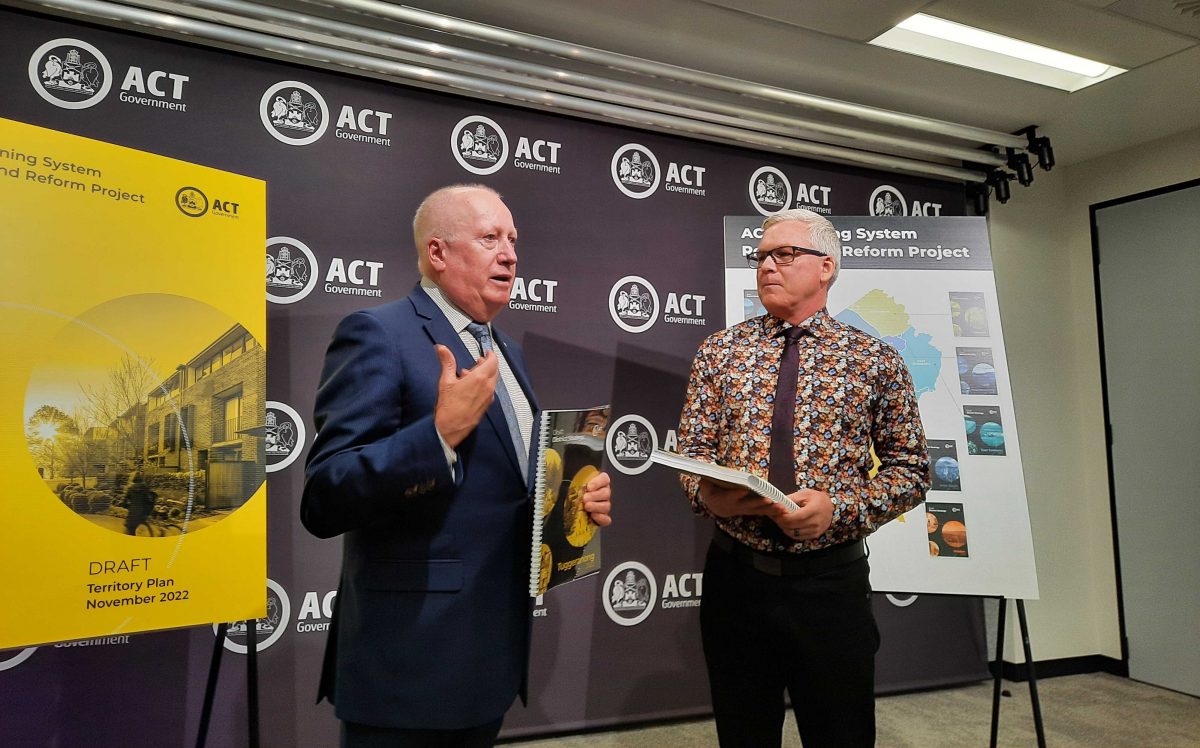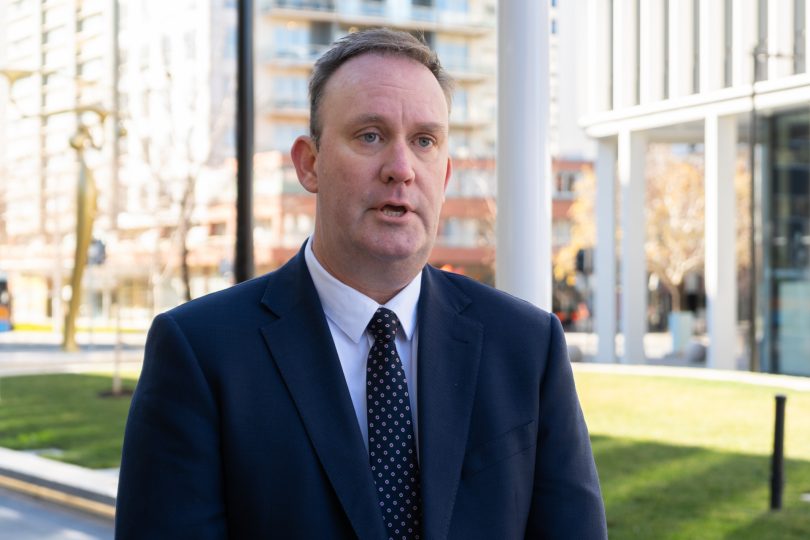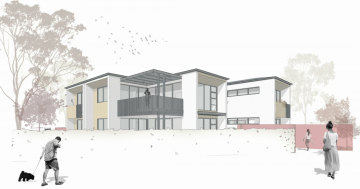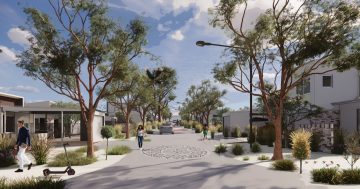
The inner suburbs are full of large blocks – many say these could easily be reduced to allow for greater density. Photo: Michelle Kroll.
It’s no secret the Territory’s got growing pains.
With a 70/30 infill target, the Barr Government is locked into putting the majority of this growth within the city’s existing footprint.
Getting to that target is proving difficult and the government is coming under increasing pressure to pass reforms which would make denser suburban development easier.

Planning Minister Mick Gentleman and Chief Planner Ben Ponton release the draft Territory Plan. Photo: Ian Bushnell.
The Territory government has been working on a draft Territory Plan and draft District Strategies.
Those are currently open for community consultation.
Ostensibly, that plan will help shift planning away from a rules-based compliance system to an outcomes-based one.
On one hand, it’s expected to make development easier.
But it’s also going to add stricter rules relating to the environment and tree protections.
Some, including housing and construction industry representatives, worry those two goals contradict one another.
Unsurprisingly, that’s not supported by the Conservation Council which argues it is possible to save trees and densify at the same time.
Executive director Elle Lawless said increasing urban density was best done by houses going up instead of out.
“[We hold] the position that there are opportunities to increase urban density in environmentally sensitive ways and support it as long as the housing is good quality and energy efficient, mature trees are maintained as much as possible, and there is space available to plant new trees,” she said.
But Housing Industry Association executive director Greg Weller is concerned a swathe of proposed tree laws will just add to developers’ red tape and make infill harder.
“If we’re going to constrain the supply of new land, we need to get an awful lot better at delivering land within the city,” he said.
Mr Weller is also worried about the increasing number of neighbours putting in objections and getting in the way of building.
“Previously, we had a system where if someone was building an exempt development with a minor technical variation from the Territory Plan, the planning authority was able to approve it when it had no impact on anyone,” he said.
“Now we see this getting referred to all of the neighbours and people withholding consent because they feel it isn’t right or against the planning system.”
That apprehension is shared by housing advocacy group Greater Canberra.
Convenor Howard Maclean is concerned the ability for new development to be blocked through ACAT is leading to a situation of inertia.
He wants more developments, including medium-density dwellings such as duplexes and townhouses, to be ACAT-exempt as with large apartment buildings in city centres.
“That’s one of the major reasons we think RZ2s don’t deliver enough housing,” he said.
“There’s a risk of a relatively low-value development being subject to a multi year-long delay and hundreds of thousands in legal and planning costs related to a challenge which could come from anywhere.”
The pace of reform also concerns Mr Maclean, who’s uncertain whether the speed of Canberra’s growth and the housing issue has really sunk in.
“We’ve got a problem where these big masterplan brownfield projects take a really long time to deliver and don’t do it quickly enough,” he said.
For now, Mr Maclean said RZ1 and RZ2 reforms were a major focus.
“The draft Territory Plan does go to addressing some of this – such as allowing apartments in RZ2. The easiest way to allow more housing in the ACT is to relax them even further,” he said.

MBA ACT CEO Michael Hopkins wants the “Mr Fluffy” rule applied to all RZ1s. Photo: Region.
For Master Builders Association ACT CEO Michael Hopkins, an easy piece of low-hanging fruit for the government would be to apply the “Mr Fluffy” dual-occupancy rule to all RZ1-zoned sites.
RZ1s are generally low rise and low-density houses which basically permit one house per block.
“That rule contained requirements around block area, site cover, height limits and open space requirements which dealt with established character,” he said.
“But at the same time they allowed two dwellings to be built on the site.
“That’s a small and straightforward step that government should take.”




















